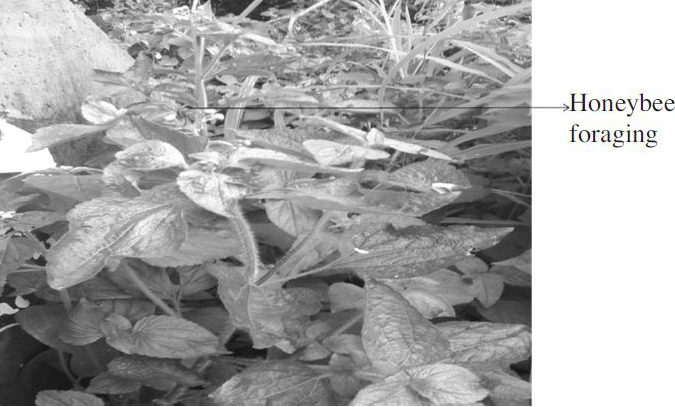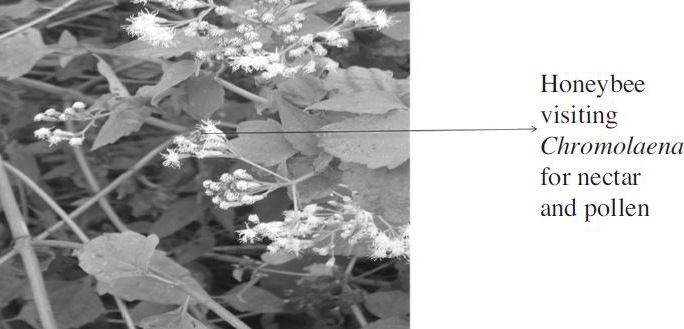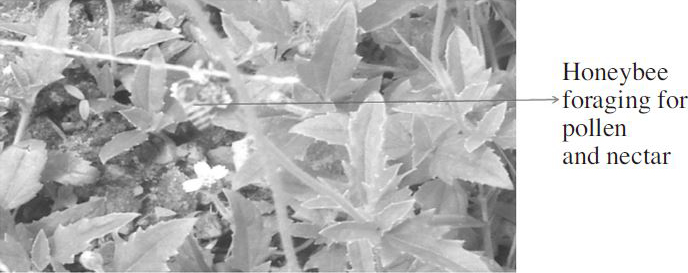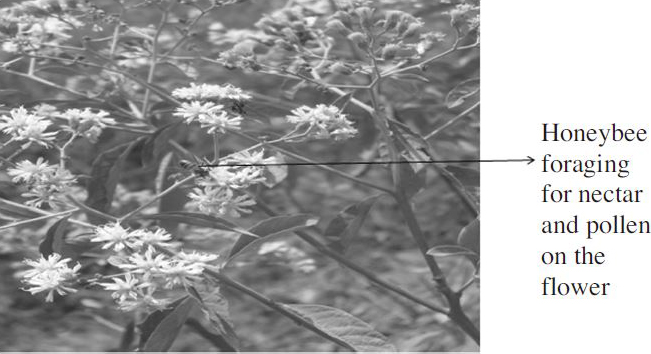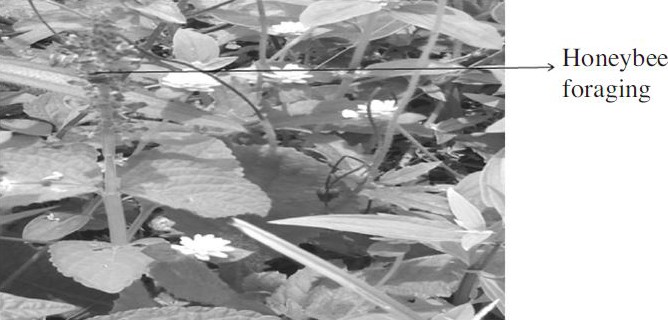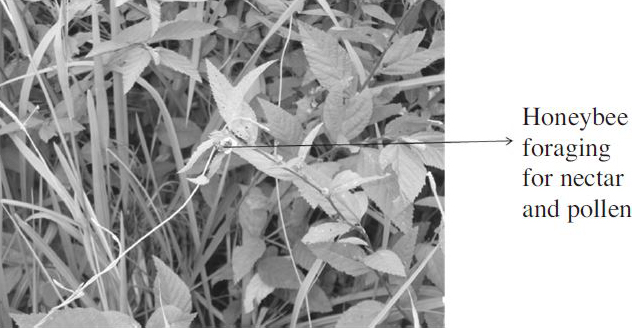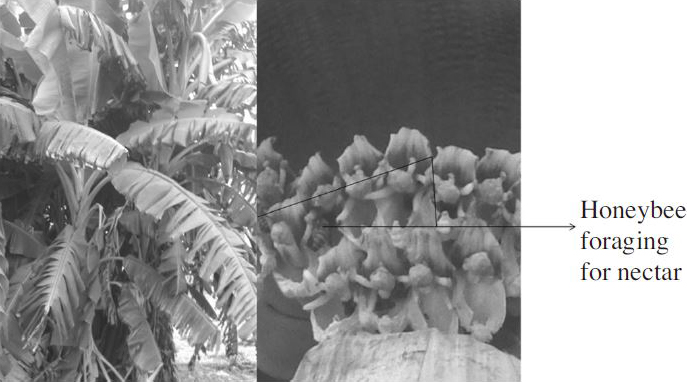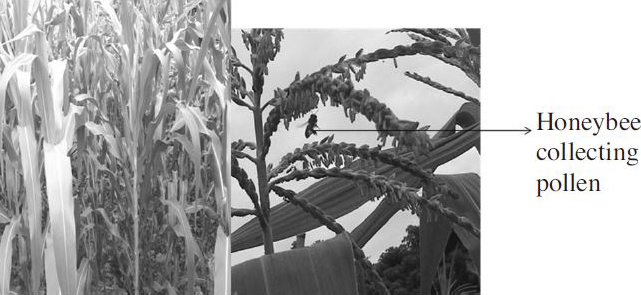
Pattern of Nectariferous Plant Diversity of African Honeybee ( Apis mellifera adansonii L.) in Awka and Agulu Environs, Southeast Nigeria
Abstract
This study was conducted between May 2014 and April 2015, to assess the pattern of nectariferous plant diversity of African honeybee ( Apis mellifera adansonii) in different areas in Awka and Agulu environs, Southeast Nigeria. Transect sampling method was used to determine the abundance, distribution and diversity of these plants. Plant species were collected and identified. A total of 83 nectariferous plant species categorized into 31 families were identified to be attractive to honeybees in Awka and Agulu environs with Asteraceae (31%, 25%) being the highly visited, followed by Euphorbiaceae and Vebenaceae in all the study areas. High diversity and richness of plants in all the study areas are good indication that Awka and Agulu environs are potential sites for apiculture and beekeeping. This study recommended that these plants be conserved in these areas.
Keywords:
Diversity, Nectariferous plants, Awka and Agulu environs, Apis mellifera adansoniiINTRODUCTION
Honeybees of the genus Apis are the most studied because of their fascinating and complex lifestyle, communication systems ( Nieh and Roubik, 1998; Nieh, 1998) and role as key pollinators of wild plants, agricultural crops, and the valuable hive products that they produce, such as honey ( Suwannapong et al., 2011 ; Akunne, 2015). Apis mellifera adansonii is the most common bee that has been given due attention in Nigeria probably because of its beneficial attributes as a natural agent of pollination and as the most important of all insect pollinators ( Mutsaers, 1991; Kumar et al., 1994). It is well adapted to the Nigeria ecological conditions ( Abdullahi et al., 2011 ) and gathers its own food freely throughout the year (Adjare, 1990). Thus flowering plants have been great essential source of nutrition to the African honeybees’ life. The production of honey depends on the abundance of nectariferous plants within easy flight range of the bee colony ( Ayansola and Davies, 2012).
The abundance and distribution of nectar and pollen producing plant species vary from one place to another due to variation in certain factors which Rodinov and Shabanshov, 1986; Bista and Shivakoti, 2001 listed them to be topography, climate and farming practices. Westphal et al. (2006) revealed that the relationship between bees’ activities and floral densities is evidence that bees have higher recruitment, reproduction and survival rates in areas with more flowers. As a general rule stated by Awmack and Leather (2002), the performance of plant herbivores is dependent on the quality and quantity of plant resources at their reach in a given season. According to Teklay (2011), bee flora species are more abundant and distributed in wet season than dry season.
In Nigeria, there is limited data on the number of plant species available for the honeybees in the rainy and dry seasons. However, the distribution and abundance of nectariferous plants in the Northern part of Nigeria has been reported by several workers namely: Abdullahi et al. (2011) , Dukku (2013), Ebenezer and Olugbenga (2010) and Mbah and Amao (2009), which they reported that Fabaceae and Leguminosae are the most abundant families in the region. Ayansola and Davis (2012), Nnamani and Uguru (2012) in the south-western and south-south regions of Nigeria, respectively, reported that the honeybees forage on various varieties of nectariferous plant species. The objectives of this research are to identify the nectariferous plants resources attractive to African honeybees ( Apis mellifera adansonii) and determine the abundance and distribution of the plants resources in Awka and Agulu environs, Southeast, Nigeria.
MATERIALS AND METHODS
Study area
The study was carried out in Awka (6 o25´N, 7 o-8 oE) and Agulu (6 o23´N, 6 o-7 oE) ( Onyido et al., 2009 ) between May, 2014 and April, 2015. Awka and Agulu lie in the tropical rain forest zone of Nigeria and experience two distinct seasons - rainy and dry. Study areas which comprise eight locations; including Apiary section and Fish Hatchery centre of the Department of Zoology, Emelda Hostel, Unizik Primary School, Library and Faculty of Engineering areas, within the Nnamdi Azikiwe University permanent site Awka, and a parcel of land (farmland) in Enu-Ifite Awka, Amatutu and Agulu Lake environs with good vegetations and water sources ( Mbah and Amao, 2009; Akunne, 2015) were marked for this study.
Collection and identification of nectariferous plants in the study sites
The collection of the nectariferous plants at the study sites was done on each location twice a week between 8am-10am in the morning and 4~6pm in the evening, during the study periods. Before collection, plants with foraging honeybees were photographed with a digital camera of model Panasonic DMC-LZ 7. Only plants with honeybees found foraging on the flowers were collected and identified in situ using keys provided in Mann et al. (2013). Plants that could not be identified in situ were collected using a sharp kitchen knife; making sure that portion/twig of the plant with its botanical features like leaves and flowers were cut and placed in a wetted polythene bag, and immediately taken to the Department of Botany Herbarium, Nnamdi Azikiwe University, Awka for proper identification. The plants that could not be identified at Botany herbarium, Nnamdi Azikiwe University were placed horizontally in-between two newspaper sheets to absorb moisture and placed in a plant file bag and sent to Department of Botany herbarium, University of Uyo, Uyo, Akwa Ibom State within 24 hours with information on the name of collector, place of collection and date of collection for identification.
To ascertain the plants honeybees preferred more as nectar and pollen source, observations were done for a period of 10 minutes between 10.00 and 11.00am daily using Abdullahi et al. (2011) and Wayar et al. (2014) methods. Based on the frequency of visit, the plants were categorised thus: highly visited (if at least four honeybees visited the flowers in quick successions), moderately visited (if three honeybees visited the flowers) and Least visited (if at least two honeybees visited the plant species). Using Bista and Shivakoti (2001) and Waykar et al. (2014) methods the observation on nectar and pollen source was based on activities performed by the honeybees on different flowers. The plants in which honeybees were seen extending their proboscis into the flowers were considered as nectar producing plant species and the plants in which bees were seen carrying pollen on their hind legs were recorded as pollen producing plants. Plants in which honeybees were seen extending their proboscis into the flowers and also collecting pollen on their hind legs were considered as nectar and pollen yielding plants. The findings on visitation frequency and foraging behaviour were recorded.
Determination of abundance of nectariferous plants in the study area
The quadrants and transect method as explained by ( Teklay, 2011) was used to determined the abundance of the nectariferous plants in the surveyed areas. The quadrants were laid at random after the study site was stratified. The distance between transects was also taken. Then the remaining quadrants were laid at equal intervals along transects. The number of plant species within quadrant were taken and recorded.
Statistical analysis
The relative frequency of each of the identified nectariferous plant species foraged by the African honeybee during the study period across the locations was calculated as the percentage of the number of plots present over total number of plots:
Shannon diversity ( HI) and Evenness ( EI) were calculated as a measure to incorporate species richness. In this study species richness (S) was computed as, the observed number of bee flora species for each study area during the study period ( Teklay 2011). However, paleontological software (PAST Version II) was used to assess the plant diversity trends as the Shannon diversity index ( H´) and evenness index ( E´).
RESULT
A total of 83 species of nectariferous plant species, grouped into 31 families were identified to be visited and foraged by Apis mellifera adansonii, in the study locations in Awka and Agulu environs ( Table 1). From the Table 1, the result shows that the family Asteraceae recorded more nectariferous plant species such as Ageratum conyzoides ( Fig. 1), Aspilia africana ( Fig. 2), Chromolaena odorata ( Fig. 3) and Pegolettia senegalensis ( Fig. 4). The family Asteraceae (31% and 25%) recorded the highest number of the nectariferous plant species identified in Awka and Agulu environs. The family Euphorbiaceae (9% and 14%) was the second family with high number of the nectariferous plant species such as Croton hirtus ( Fig. 5), Euphorbia heterophylla ( Fig. 6) and Manihot esculenta ( Fig. 7). While the family Malvaceae (7%) being the third family with high nectariferous plants such as Triumfetta rhomboidea ( Fig. 8), Sida acuta ( Fig. 9) and Triumfetta cordifolia ( Fig. 10) was recorded only in Awka. Other families were scantily present in the study areas.
The nectariferous plant species including herbs, shrubs and trees categorized based on presence of nectar, pollen and both nectar and pollen visited by honeybees are presented in Table 2. Eighteen (21.7%) of these plant species were observed to produce nectar only, Six (7.2%) pollen, fifty-eight (69.9%) produced nectar and pollen and one (1.2%) of the plant sources was not defined. 46 (55.4%) of the surveyed nectariferous plant species foraged by the honeybees in the study areas were herbs, 27 (32.5%) were shrubs and the remaining ten (12.1%) were trees. Table 2 also show the African honeybee visitation intensity to the plant species. 35 (42.17%) of the nectariferous plant species were highly visited, 33 (39.76%) were moderately visited and fifteen (18.07%) were least visited by the African honeybees.

The Nectariferous plant species attractive to Apis mellifera adansonii in Awka and Agulu environs, southeast, Nigeria
Abundance and Distribution of the Identified Plant Species in the Study Areas
The abundance and distribution of the nectariferous plants recorded in Awka and Agulu environs during the survey are represented in Table 2. During the rainy (April and October) and dry (November and March) seasons, in Awka, the identified plant species are more abundant than that identified in the Agulu environs. For instance in Awka, during rainy and dry seasons, a total of 16383 and 9612 were recorded respectively, while in Agulu environs 758 and 258 were recorded for rainy and dry seasons respectively. However, 1589 and 1464 against Aspilia africana, 2878 and 1670 for Tridax procumbens and 4372 and 3164 for Pegolettia senegalensis, were recorded as compared to the abundance of the plant species recorded in the other study areas as shown in Table 2. In the study areas in Agulu environs, 131 and 91 recorded for Helianthus annuus and 39 and 32 for Hyptis suaveolens were the most recorded abundance plant species in the rainy and dry seasons respectively.
The diversity index trends for the nectariferous species sampled in Awka and Agulu Environs during the study period were recorded and are presented in Table 3. In Awka, the Apiary, Emelda Hostel, and Library areas recorded the highest diversity (Shannon’s Wiener Index) of plant species and richness values of 2.25 (25), 2.21 (19) and 2.17 (14) respectively in the rainy season, while in the Agulu environs, Amatutu and Agulu lake areas recorded 2.36 (17) and 2.09 (12) for plant species diversity and richness values respectively. In the dry season, in Awka, Emelda hostel area recorded a relatively high diversity value of 1.98 and richness value of 12, whereas Ifite, Awka recorded a relatively low diversity value of 0.97 and richness value of 6.

The Abundance and relative frequency of the plants species identified in quadrant in the studied areas in Awka and Agulu environs in the rainy and dry seasons
DISCUSSION
A total of 83 nectariferous plant species grouped into 31 families were identified in this study in the Southeast, Nigeria. 35 nectariferous plant species such as Acacia auriculaeformis, Aspilia africana, Ageratum conyzoides, Mangifera indica, Tectona grandis, Tridax procumbens, Vernonia amygdalina, Zea mays, Carica papaya, Manihot esculenta, Luffa cylindrical, Musa sapientum, Sida acuta, Urena lobata, Citrus sinensis, Chromolaena odorata, Talinum triangulare, Cucurbita maxima, Chamaecristis mimosoides, Cleome viscose, Crotalaria retusa, Jathropa gossypiifolia, Physalis angulata, Psidium guajava, Ricinus communis, Sarcocephallus latifolius, Solanum torvum, Parkia biglobosa, Triumfetta cordifolia, Cosmus sulphurens, Ludwigia decurrens, Borassus aetheopum, Senna occidentalis, Watheria indica and Combretum sp, were also reported in the Sudan Savannah, guinea savannah and tropical rainforest of southwest and Southsouth of the vegetative zones of Nigeria ( Omoloye and Akinsola, 2006; Mbah and Amao, 2009; Ebenezer and Olugbenga, 2010; Abdullahi et al., 2011 ; Abel and Banjo, 2012; Nnamani and Uguru, 2012; Dukku 2013). Other nectariferous plant species such as Harungana madagascariensis, Plastostoma africanum, Pegoletia senegalensis, Spigelia anthelmia, Panicum maximum, Vernonia ambigua, Commelina diffusa, C. benhalensis, Xylopia aethiopia and Stachytarpheta jamaicensis are being reported for the first time as the major plants visited by the African honeybees in Nigeria. The availability of these nectariferous plant species in the study areas as an important biological resources in beekeeping practices as they produce nectar and pollen, the food source of honeybees is in agreement with the aforementioned authors as well as Sanford (2003), Grozeva and Budakov (2010), who reported that nectariferous plants provide food, for honeybees in the form of nectar and pollen. No wonder, Akunne (2011) reported of having bumper yield of honey from Apiary of the Department of Zoology, Nnamdi Azikiwe University, Awka due to the presence of these nectariferous plants in the site. The high result obtained on the number of the plant species that produced nectar alone and both nectar and pollen is an indication that honeybees’s colony performance and productivity in the Southeastern zone of Nigeria will be sustained.
Generally, the honeybees’s visitation and exploitation of the plant species varied from one plant species to another as shown in the result, thus making some of the plant species to be identified as highly visited, some moderately visited and least visited. For instance plant species such as Ageratum conyzoides, Aspilia africana, Chromolaena odorata, Pegolettia senegalensis, Tridax procumbens, Vernonia ambigua, V. amygdalina, Harungana madagascariensis, Combretum sp and Manihot esculenta are highly visited and exploited by the African honeybees in the study areas, Cleome viscose, Terminalia glaucoscens and Hewittia sublobata, are moderately visited by the African honeybees.
The family Asteraceae has the highest number of species across the study areas in Awka and Agulu environs in South-east of Nigeria, it is in contrast to the findings of Mbah and Amao (2009) in Northwest, Nnamdi and Uguru (2011) in South-south and Dukku (2013) in Northeast of Nigeria, who reported that Leguminosae, Euphorbiaceae and Fabaceae were the most predominant respectively.
The abundance and distribution of the nectariferous plant species was higher in the rainy season than the dry season. In Awka environs, during the rainy and dry seasons, more of the plant species were recorded than Agulu environs, yet among the study sites in Awka, the Apiary section recorded more of the nectariferous plant species richness than other areas. This may explain why the section is chosen for apicultural practices, which according to Akunne (2015) stated that apiaries should be located in areas with abundant pollen and nectar producing plants. Rodinov and Shabanshor (1986) noted that slight variations in nectar resources across areas are common, and this may not pose a serious challenge to profitable apiculture.
The result also showed that during the dry season Agulu Lake Site in Agulu environ had more plant species diversity and richness than Amatutu area. This also supports Akunne (2015) who reported that the availability of water is prerequisites for setting apiary. However, the high diversity and distribution of foraging sources as recorded in Awka and Agulu environs, in this study provide the necessary good environment for the beekeeping since pollen and nectar are in abundance.
Having these vegetative qualities, Awka and Agulu environs, show good indication for beekeeping as a cottage industry for honey production and farmers will enjoying bumper crop harvest due to adequate pollination. It is pertinent to recommend that many of the nectariferous plant species that abound in these areas be conserved for foraging resources of the African honeybees through extensive cultivation and propagation. The areas in which this research was carried out, for instance Apiary section and Agulu Lake areas should be demarcated and safeguarded as ‘bee sanctuaries for African Honeybees’.
LITERATURE CITED
- Abdullahi, G., Sule, H., Chimaya, I. A., and Isah, M. D., (2011), Diversity and relative distribution of Honeybees foraging plants in some selected reserves in Mubi region, Sudan Savannah zone of Nigeria, Advances in Applied Science Research, 2(5), p388-395.
- Akunne, C. E., (2011), Ecological studies on Honeybee ( Apis mellifera L.) in relation to Optimal Production of Honey in Awka, Nigeria , PhD Dissertation submitted to the Department of Zoology, Nnamdi Azikiwe University, Awka, p206.
- Akunne, C. E., (2015), The Rudiments of Beekeeping, Divine Press and Publishers, Awka, Nigeria, p52.
- Awmack, C. S., and Leather, S. R., (2002), Ecology of insect in pool and the environment, Annual Review of Entomology, 47, p817-844.
- Ayansola, A. A., and Davies, B. A., (2012), Honeybee floral resources in South Western Nigeria, Journal of Biology and Life Science, 3(1), p127-139.
- Bista, S., and Shivakoti, P. G., (2001), Honeybee flora at Kabre Dolakha District, Nepal, Journal of Napal Agric. Res, (4 and 5), p16-25.
- Dukku, U. H., (2013), Identification of plants visited by the honeybee, Apis mellifera L.in the Sudan Savanna Zone of Northeastern Nigeria, academic journals , Africa Journal of Plant science, 7(7), p273-289.
-
Ebenezer, I. O., and Olugbenga, M. T., (2010), Pollen characterisation of Honey samples from North Central Nigeria, J Biol. Sci, 10(1), p43-47.
[https://doi.org/10.3923/jbs.2010.43.47]

- Grozeva, N., and Budakov, P., (2010), Nectariferous plants in Sinite Kemani Natural Park - Sliven, Trakia Journal of Science, 8(4), p7-11.
- Kumar, R., Rajpu, G. S, Mishra, R. C., and Agrawal, O. P., (2013), A study on assessment of duration of dearth period for Honeybees in Haryana, India, Munis Ento. and Zoo, 8(1), p434-437.
- Mann, A. A., Muhammed, G., and Abdlkadir, N. U., (2003), Medicinal and Economic plants of Nupeland, JUBEEvans Books and Publications, p32-243.
- Mbah, C. E., and Amao, A. O., (2009), Natural food and feeling habitat of the African honeybee Apis mellifera adansonii Laterielle (1804) in Zaria, Northern Nigeria , Science World Journal, 4(1), p11-14.
- Mutsaers, M., (1991), Honeybees in their natural environment in south western Nigeria, Nigerian Field, 56, p19-28.
-
Nieh, J. C., (1998), The role of scent beacon in the communication of food location by the stingless bee,
Melipona panamica, Behaviour Ecology Sociobiology, 43, p47-58.
[https://doi.org/10.1007/s002650050465]

-
Nieh, J. C., and Roubik, D. W., (1998), Potential mechanisms for the communication of height and distance by a stingless bee,
Melipona panamica, Behaviour Ecology Sociobiology, 43, p387-399.
[https://doi.org/10.1007/s002650050506]

- Nnamani, C. V., and Uguru, A. N., (2012), Genetic diversity of honey producing plants under changing climate in southern Nigeria: Need for conservation to improve food security and livelihood option, Third RUFORUM Biennial Meeting 24-28 September 2012, Entebbe, Uganda, p1455-1458.
- Omoloye, A. A., and Akinsola, P. A., (2006), Foraging sources and effects of selected plant characters and weather variables on the visitation intensity of Honeybee, Apis mellifera adansonii (Hymenoptera: Apidae) in the Southwest Nigeria , Journal of Apicultural Science, 50(1), p39-48.
- Onyido, A. E., Okolo, P. O., Obiukwu, M. O., and Amadi, E. S., (2009), A survey of vectors of public health diseases in un-disposed refuse dumps in Awka town, Anambra state, Southeastern Nigeria, Research Journal of Parasitology, 4(1), p22-29.
- Rodinov, V. V., and Shabanshor, M., (1986), The Fascinating world of bees, Mir Publishers, Moscow (Russia), p123.
- Sanford, M. T., (2003), Beekeeping: Florida Bee Botany, Extension. Institute of Food and Agricultural science. University of Florida, p686-690.
- Suwannaong, G., Benbow, M. E., and Nieh, J. C., (2011), Biology of Thai Honeybees: Natural History and Threats, In Bees Biology, Threats and Colonies Editor: Richard, M. Florio, p1-98, Nova science publishes, Inc, p341.
- Teklay, A., (2011), Seasonal Availability of common bee flora in relation to land use and colony performance in Gergera Watershed, Atsbi Wembwrta District, Eastern Zone of Tigray, M.Sc.?Thesis, Hawassa University, Wondo Genet College of Forestry and Natural Resources, Wondo Genet, Ethiopia, p267-356.
- Waykar, B., Baviskar, R. K., and Nikam, T. B., (2014), Diversity of nectariferous and polleniferous bee floral at Anjaneri and Dugarwadi hills of Western Ghats of Nasik districk (M.S.) India, Journal of Entomology and Zoology Studies, 2(4), p244-249.
